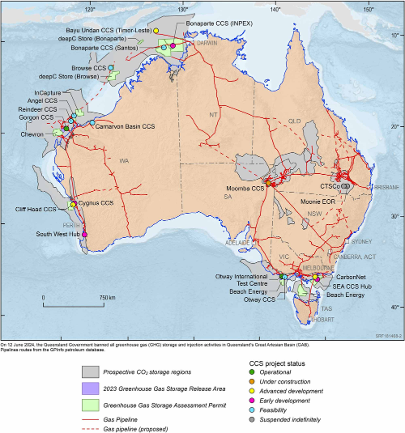Understanding Australia's Net Zero Targets and What They Mean
- infranomics
- Nov 3
- 4 min read
Australia is at a pivotal moment in its environmental journey. The country has committed to ambitious climate action plans aimed at reducing greenhouse gas emissions and transitioning to a sustainable future. Central to this effort are Australia's net zero goals, which outline the pathway to achieving carbon neutrality. This blog post explores what these goals entail, their significance, and how they impact various sectors across the nation.
Australia's Net Zero Goals: An Overview
Australia's net zero goals are designed to reduce carbon emissions to zero by balancing the amount of greenhouse gases emitted with the amount removed from the atmosphere. The government has set a target to reach net zero emissions by 2050, aligning with global efforts to limit global warming to 1.5 degrees Celsius.
Achieving these goals requires a comprehensive approach involving renewable energy adoption, energy efficiency improvements, and changes in industrial processes. For example, the expansion of solar and wind energy projects across Australia is a key driver in reducing reliance on fossil fuels. Additionally, initiatives to improve building insulation and promote electric vehicles contribute to lowering emissions.
The commitment to net zero also involves collaboration between federal and state governments, businesses, and communities. Policies such as carbon pricing, incentives for clean technology, and stricter emissions standards are being implemented to support this transition.

Key Sectors Driving Change in Australia’s Net Zero Journey
Several sectors play a critical role in Australia's path to net zero emissions. Understanding these sectors helps clarify where efforts are concentrated and what challenges lie ahead.
Energy Sector
The energy sector is the largest contributor to Australia's emissions, primarily due to coal-fired power plants. Transitioning to renewable energy sources like wind, solar, and hydroelectric power is essential. The government and private sector are investing heavily in renewable infrastructure, aiming to increase the share of clean energy in the national grid.
Transport
Transport accounts for a significant portion of emissions, especially from road vehicles. The shift towards electric vehicles (EVs) and improved public transport systems is vital. Incentives for EV purchases and the development of charging infrastructure are accelerating this change.
Agriculture
Agriculture contributes through methane emissions from livestock and nitrous oxide from fertilisers. Sustainable farming practices, such as improved grazing management and precision agriculture, can reduce emissions while maintaining productivity.
Industry
Heavy industries like mining and manufacturing face challenges in decarbonisation. Innovations in energy efficiency, electrification, and carbon capture and storage (CCS) technologies are being explored to reduce their carbon footprint.
What are the targets for IMO 2030 and 2050?
The International Maritime Organization (IMO) has set ambitious targets to reduce greenhouse gas emissions from shipping, which is a significant contributor to global emissions. Australia, as a maritime nation, aligns with these targets to ensure sustainable shipping practices.
IMO 2030 Target: Reduce carbon intensity of international shipping by at least 40% compared to 2008 levels.
IMO 2050 Target: Achieve a 70% reduction in total greenhouse gas emissions from shipping compared to 2008.
These targets encourage the adoption of cleaner fuels, energy-efficient ship designs, and operational improvements. Australian ports and shipping companies are investing in technologies such as LNG-powered vessels and exploring alternative fuels like hydrogen and ammonia.

How Businesses Can Align with Australia's Net Zero Goals
Businesses across Australia have a crucial role in meeting the country's climate commitments. Here are practical steps companies can take:
Assess Carbon Footprint
Conduct a thorough audit of emissions to identify key sources and opportunities for reduction.
Set Science-Based Targets
Align corporate goals with national and international climate targets to ensure meaningful impact.
Invest in Renewable Energy
Transition to renewable energy sources for operations, either through on-site generation or purchasing green energy.
Improve Energy Efficiency
Upgrade equipment, optimise processes, and implement energy management systems to reduce consumption.
Engage Stakeholders
Collaborate with suppliers, customers, and employees to foster a culture of sustainability.
Offset Residual Emissions
Invest in credible carbon offset projects to neutralise emissions that cannot be eliminated immediately.
By integrating these strategies, businesses not only contribute to national goals but also enhance their competitiveness and resilience in a low-carbon economy.
The Role of Individuals in Supporting Net Zero Ambitions
While government and business actions are critical, individual efforts also matter. Australians can contribute by:
Reducing Energy Use: Simple actions like switching to LED lighting, using energy-efficient appliances, and turning off unused devices.
Choosing Sustainable Transport: Walking, cycling, using public transport, or switching to electric vehicles.
Supporting Renewable Energy: Installing solar panels at home or choosing green energy plans.
Minimising Waste: Recycling, composting, and reducing single-use plastics.
Advocating for Change: Supporting policies and initiatives that promote sustainability.
Collective individual actions create demand for cleaner products and services, encouraging broader systemic change.
Looking Ahead: What Australia’s Net Zero Future Could Look Like
Australia’s journey to net zero is complex but full of opportunity. The transition promises cleaner air, new jobs in renewable industries, and a more resilient economy. Innovations in technology, such as battery storage, hydrogen fuel, and carbon capture, will play a significant role.
Communities will see changes in infrastructure, from electric vehicle charging stations to upgraded public transport. Education and training programs will prepare the workforce for green jobs. Moreover, Australia’s leadership in climate action can inspire other nations to follow suit.
For those interested in learning more about how to navigate and contribute to these efforts, exploring resources on net zero targets can provide valuable guidance.
Understanding Australia's net zero goals is essential for everyone. Whether you are a business leader, policymaker, or concerned citizen, knowing the targets and how to contribute helps build a sustainable future for all. The path to net zero is challenging but achievable with collective commitment and action.




Comments